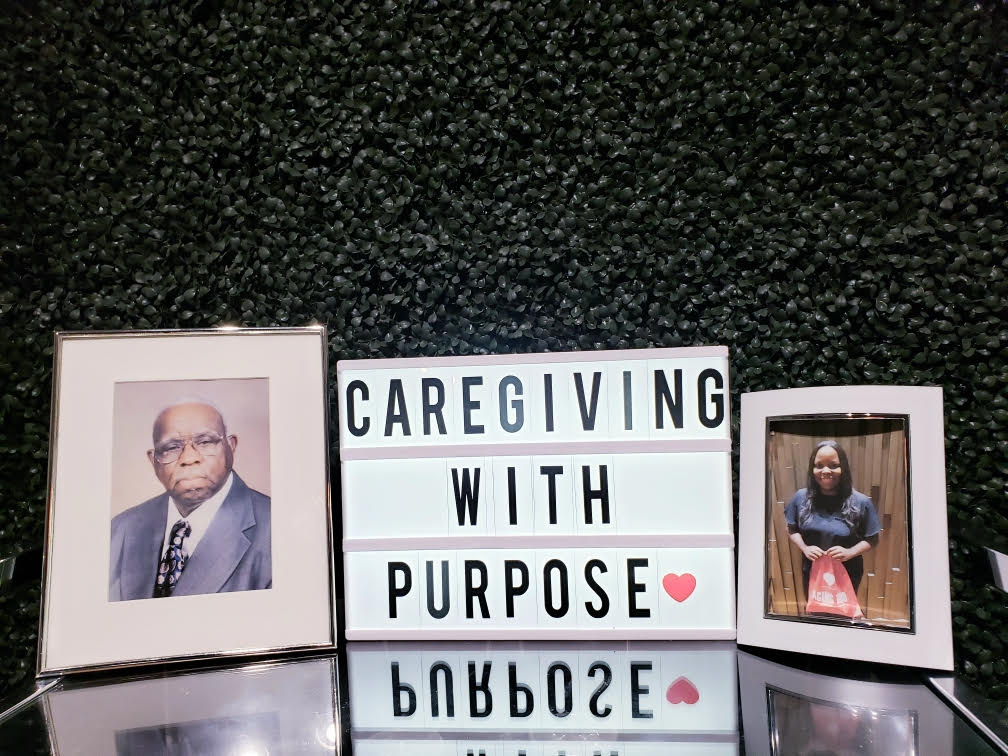Abstract:
Substance use among older adults is an increasing global public health concern. Prior to COVID-19, barriers limited accessibility to screening and intervention for substance use among older adults. During COVID-19, barriers persist, while risks for harm to older adults who use substances increase. Telehealth can address these barriers and increase older adults’ safety and well-being. Telehealth uses technology to remotely engage, screen, and provide treatment. Telehealth can benefit older adults, but considerations must be made when designing and applying interventions to this cohort. This article reviews telehealth across levels of care for behavioral health, and provides recommendations.
Key Words:
telehealth, mobile technology, aging, behavioral health, substance use, alcohol
At the beginning of the twentieth century, individuals ages 65 and older were an estimated 1 percent of the global population, and, in 2050, that proportion is estimated to reach 20 percent (Kuerbis, 2020). As the global population ages, there has been a simultaneous, dramatic increase over the past twenty-five years of drug and alcohol use worldwide, resulting in higher rates of alcohol use disorder (AUD), substance use disorders (SUD) and related disease, injury, morbidity, and mortality (Degenhardt et al., 2018). These two separate shifts in global demographics and health behaviors converge to highlight a concerning public health problem: high-risk alcohol and other substance use, including AUD and SUD, among older adults.
The recent global emergence of COVID-19 underscores further critical shifts in public health related to older adults who use substances. Older adults are known to be more vulnerable to the virus and tend to have more severe responses to it. In addition, upticks in substance use to cope with the stresses of quarantine and fears of the virus have been documented across all ages, yet older adults may be particularly vulnerable to these stressors and their subsequent consequences (Satre et al., Preprint, 2020). Prior to COVID-19, adults ages 55 and older demonstrated an increase in opioid overdoses over the last decade (Kaiser Family Foundation, 2018). Given the isolation, lack of access to regular medical visits, and consequences of quarantine, it is expected that overdoses, relapse in those with pre-existing SUD, and untreated physical consequences of substance use will have increased during this time.
Several structural and personal barriers existed prior to COVID-19 that hindered older adults and the providers who serve them in identifying, adequately screening for, and intervening with substance use. Structural barriers to screening and intervention in primary care, for example, include limited clinician time, discomfort on the part of providers with screening and intervention, cost to patient or lack of adequate medical coverage, lack of continuing care, and lack of transportation or access to even basic healthcare services (Kuerbis, 2020). Older adults, their families, and providers also may inadvertently mistake the consequences of substance use for normal aging, resulting in a failure to assess for alcohol and substance use.
Personal barriers to intervention include stigma and shame surrounding substance use and related problems, particularly in late life, and a preference for dealing with problems privately—all of which lead to an avoidance on the part of the older adult of disclosing alcohol and other substance use. In the era of COVID-19, there is increased need for innovative interventions with this vulnerable population. At the same time, maintaining safety remains critical as the speed and scope of the virus spread remains high.
Telehealth is one way to overcome many of the barriers to care for older adults who use substances. Telehealth provides healthcare via computers, Internet, and mobile devices; it encompasses multiple modalities, and is multipurpose (screening, treatment, monitoring, or reminding), with distinct levels of intensity (i.e., from a single text message to a twelve-session computer-based psychosocial intervention) (Campbell, Muench, and Nunes, 2015). Telehealth also can be a combination of several of these examples, i.e., for online treatment programs that provide synchronous and asynchronous components to interventions and social support. Any of these methods can be provided independently or adjunctively to treatment for SUD.
Importantly, telehealth offers a way to: provide standardized care; address barriers to screening and intervention (i.e., increases: treatment accessibility, affordability, and anonymity to decrease stigma); and enhance the health and safety of older adults who use substances during the time of COVID. These advantages make telehealth optimal for supporting aging in place and reducing harm.
Use and Accessibility
Despite assumptions to the contrary, older adults effectively engage with telehealth (Kuerbis et al., 2017). For example, older adults already are seeking help and health information about their drinking online (Han et al., 2018) and seeking telehealth treatments, such as text message interventions (Kuerbis, van Stolk-Cooke, and Muench, 2017a). A majority of older adults now use computers, the Internet, have a smartphone or a cell phone, and text on a weekly basis. Thus, the digital divide is less defined by age, and more by experience, financial resources, and cognitive and physical limitations.
‘Personal barriers to intervention include stigma and shame surrounding substance use and related problems.’
When designing technology-based interventions to serve older adults, ensuring accessibility across heterogenous groups of older adults, with a wide spectrum of experience accessing and using specific technologies, should be a priority. Technology requires user-centered design (Interaction Design Foundation, 2019), which respects the strengths, potential limitations, and preferences of its users and directly involves them in the design process.
Visual, mental, and physical accommodations are critical to optimizing older adult engagement with innovative technologies (Kuerbis, Mulliken et al., 2017). Webpages and smartphone apps must provide visual accommodations, such as age-friendly color schemes, high contrast between text and background, and layouts that are screen-reader friendly. Cognitive changes that occur as we age prevent the perception of continually changing images, such as an opening banner on a webpage. Spatial visualization, the ability to mentally manipulate two- and three-dimensional objects, is required for a person to easily navigate the hierarchical structure of a webpage. Because this ability diminishes with age, webpages or smartphone apps become increasingly inaccessible. Apps and webpages can increase accessibility for older adults by using words instead of icons to prompt navigation, as language skills increase with age.
Older adults with tremors or limited dexterity may need special accommodation when using devices with touch screens (Kuerbis, Mulliken et al., 2017). Buttons need to be large and the screen adequately insensitive for them to comfortably navigate a tablet-based questionnaire. Older adults also need clear feedback of successful task completion—a change in screen (i.e., Thanks for completing this questionnaire!) or a change in the color of a button, a haptic vibration, or a tone to suggest a question was completed. Additionally, older adults often report fear around committing a “fatal” error, such as causing information to be deleted or losing their place on an app. Interface design for older adults requires clear navigation prompts to be able to go back, fix, or change responses.
Telehealth Interventions for SUD in Older Adults
When age-appropriate design considerations are made, technology provides an exciting frontier to address substance use concerns with older adults. Below we discuss how telehealth could or, in some cases, already is increasing access to behavioral health screening and intervention among older adults. In an effort to provide optimal care, many approaches have included a combination of technologies. For simplicity, we review four ways of incorporating technology for screening, education, and intervention separately: Internet/web-based screening, education interventions; brief and short-term interventions delivered using technology; mobile interventions (i.e., use of apps and text messaging); and remote video conferencing.
Internet/Web-based Screening and Education Interventions
There are several websites that provide screening, education and feedback about safe drinking. Examples include alcoholscreening.org in the United States, DrinkWiseAgeWell.org in the U.K., and CheckYourDrinking.net in Australia. While their main focus is on alcohol, some have expanded to include other substances. Thorough screening may be hindered, however, as confidentiality of the data cannot be guaranteed, and participants may fear legal repercussions. Despite limitations, web-based screening can offer a thorough assessment of quantity and frequency of drinking and risk factors, as well as provide education, feedback, and information about where to obtain help.
Providers who are pressed for time, hesitant to ask about use of alcohol or other substances, or not fully educated about the unique issues of older adult substance use can refer patients to these web-based screening programs. Such programs are often free or low cost (Campbell, Muench, and Nunes, 2015) and provide an important opportunity to reduce stigma by normalizing the conversation about use of alcohol or other substances in late life. Older adults who are hesitant to disclose substance use may feel more comfortable seeking help anonymously online, instead of face-to-face with a provider. Evidence suggests that older adults are already seeking help through these sites. For example, of the more than 90,000 visitors to alcoholscreening.org in 2013 (Han et al., 2018), a bit more than 78,000 were at-risk drinkers. Among those, 19.4 percent were individuals ages 50 to 65 and 3.5 percent were ages 66 to 80.
A major drawback to web-based screening and feedback interventions is that few are tailored to older adults. Assessment tools may not be validated for older adults or may not consider their unique vulnerabilities to alcohol and other substance use. For example, few web-based screening programs ask about comorbid health problems (i.e., depression, diabetes, or hypertension) or associated medications, both of which are contraindicated for use with alcohol and other substances, particularly among older adults (Kuerbis, 2020).
Even when tailored to older adults, web-based screening and education may be less effective for older adults compared to younger cohorts. One website, which was specifically designed for and tested on older adults who drink, “A Toast to Health in Later Life! Wise Drinking as We Age” (Fink et al., 2016), found no significant difference in drinking among those who used the website and those who did not. In addition, older adults may react differently to types of feedback. One study demonstrated that older adults make more ambitious plans for change in response to normative feedback (i.e., based on peer comparison) than when they receive personalized feedback (health-based information and personal risk for developing harm or a disorder) (Kuerbis, Hail, et al., 2017).
Brief and Short-term Interventions Delivered Using Technology
Beyond screening and feedback, there are also more intensive interventions that can be implemented either via the Internet or a computer-based program, ranging from providing educational material to interventions based on cognitive-behavior therapy (CBT) (see Table 1). The existing but limited empirical evidence demonstrates that age-adapted treatment and CBT are often the most effective modalities for older adults who use substances (Kuerbis and Sacco, 2013). With proper age-appropriate adaptations, Internet- and computer-based interventions might outperform mainstream, community-based, in-person treatments that lack such adaptations. They also offer privacy and access to services where no dedicated programs exist.
Table 1: Interventions Delivered Via the Internet or a Computer-based Program
|
Examples |
Intervention technique |
Results |
Current limitations |
|
Gould et al. (2019) |
Educational videos |
Relaxation exercises taught via educational videos are shown to be effective among older adults in reducing stress. |
|
|
Kiluk et al. (2016)
|
Online-intervention with 12 modules
(Also adapted for mobile devices) |
CBT4CBT is an effective online and/or computer-based program that implements cognitive behavioral therapy (CBT) for SUD. |
Not yet tested in older adults.
Adaptation to old age are needed. |
Mobile Interventions
Interventions implemented via smartphone apps are used among older adults to foster medication adherence, dietary regimens to stabilize diabetes, to provide appointment reminders, and to reduce and/or cope with pain (Kuerbis, Mulliken, et al., 2017). Interestingly, apps appear to be helpful and effective in addressing some health behaviors, yet are not universally effective across health behaviors among older adults. A recent study found expertise of using a smartphone app for a health-related behavior was negatively associated with age and physical mobility (Mohlman and Basch, 2020). Still, some smartphone apps targeting substance abuse, such as the mobile relapse prevention program A-CHESS (Gustafson et al., 2014), may be successfully adapted for older adults (see Table 2).
Two major factors prevent broad adoption of smartphone apps to intervene with health behaviors among older adults: penetration of smartphone ownership and limited data plans. In 2019, the Pew Research Center reported that 79 percent of adults ages 50 to 64 owned a smartphone, whereas only 53 percent of those ages 65 and older owned one (Pew Research Center, 2019). Given that older adults may live on a fixed income, data plans may be insufficiently large for successful implementation of data-heavy interventions (Pew Research Center, 2016). Until smartphone ownership expands, behavioral health apps targeting older adults are somewhat limited.
Text messaging offers a way to address the barriers to smartphone app engagement. While smartphone ownership is limited, cell phone ownership is widespread across socioeconomic status and age. In 2019, cellphones were owned by 95 percent of people ages 50-64 and 91 percent by those ages 65 and older (Pew Research Center, 2019).
Penetration of smartphone ownership and limited data plans prevent broad adoption of smartphone apps with older adults.
Text messaging is a nearly universal capability on all cell phones. Data from Pew shows that a majority of adults across the lifespan text in their daily life, which means texting could provide broad access to older adults. Other advantages of text messaging include: its reliance on narrative text, playing to the strengths of aging; its elimination of fears around navigation errors; and its lack of reliance on spatial visualization. Finally, the cost of developing a text messaging intervention is substantially less than the cost of developing a smartphone app, which requires ongoing programming, updating, and adaptation (Quanbeck et al., 2014).
Text-message interventions for behavioral health remain relatively rare, and few have been applied to older adults (Kuerbis et al., 2017) (see Table 2).
Mobile interventions for AUD/SUD are most effective when they are tailored to provide relevant content and maintain relevance by adapting over time to the user’s progress (Quanbeck et al., 2014). Tailoring text messages to older adults requires not only formatting content but also adjusting tone and style (Kuerbis, van Stolk-Cooke, et al., 2017b).
Interestingly, a recent study on text messaging to reduce hazardous drinking found that adults ages 50 to 65 reported high satisfaction and demonstrated effectiveness with text messaging, regardless of type of tailoring, with 75 percent of the older group electing to continue receiving text messages after the study period concluded (Kuerbis et al., under review). Text messaging offers an inexpensive, accessible, private, destigmatizing, and straightforward format for intervening with older adult health behaviors, and at least preliminarily, demonstrates positive outcomes of reduced harm.
Table 2: Interventions Delivered Via Smartphone App or Text Messaging
|
Examples |
Intervention technique |
Results |
Current limitations |
|
Gustafson et al. (2014) |
A-CHESS, highly sophisticated mobile relapse prevention |
Effective aftercare program for individuals graduating treatment. |
Not yet tested in older adults. |
|
Kuerbis et al. (Under review) |
12 weeks text messaging to reduce hazardous drinking.
|
Text messaging is equally effective in reducing hazardous drinking among adults 18 to 49 years old (70% of sample) and 50 to 65 years old (30% of sample). |
No adaptations were made for older adults.
No adults older than age 65 were included in the study. |
Remote Video Conferencing
COVID-19 has caused a rapid expansion and adoption of telehealth across healthcare, particularly web-conferencing, and, with it, an increasing, if reluctant, acceptance of telehealth by consumers, providers and payors. Telehealth in substance-use treatment expanded prior to COVID-19, with a proliferation of online treatment programs and peer-support or e-self-help groups (see Table 3) occurring over the last decade (Campbell, Muench, and Nunes, 2015), providing much needed increased access to care. Many of these programs use a combination of web-conferencing, synchronous chat, or asynchronous social media or learning modules. Few, if any, of these online programs are specifically designed to serve older adults, and therefore, the ability of such programs to appropriately engage and accommodate older adults remains unexplored.
However, preliminary evidence suggests such programs could be successfully adapted to older adults (see Table 3). Two studies on telehealth to reduce hazardous drinking at a large hospital network in the Northeast yielded as of yet unpublished data on participants ages 52 to 73 and their younger cohort. Findings in both studies revealed equivalent rates of reduced drinking between in-person and web-conferencing for both older and younger participants.
Table 3: Video Conferencing
|
Examples |
Intervention technique |
Results |
Current limitations |
|
Tempest, SMARTIOP, LionRock |
Online substance abuse treatment programs |
Effective in treating substance use. |
Not yet tested in older adults. |
|
Online Alcoholics Anonymous, SMART Recovery |
Online e-self-help programs that include chat, web con-ferencing. Provide abstinence or moderation-based peer support
|
Shown to be effective in the community in person. |
No adaptations are made for older adults.
No adults older than age 65 were included in studies of online recovery groups. |
|
Telehealth at Northeast hospital |
Brief treatment for AUD, using motivational interviewing and CBT over web-conferencing platform |
Equivalent outcomes to in-person among those ages 52 to 73. Almost 70% of 66 older adults in one of two studies chose telehealth—equivalent to their younger cohort. |
|
Technology Preferences Among Older Adults
Few studies examine older adults’ preferences regarding delivery of technology-based behavioral health interventions as alternatives to, or in conjunction with in-person treatment. One study examined preferences among seventy-seven older adult veterans (mean age=69, SD=7) (Gould et al., 2020). While a third (35 percent) preferred printed materials, just under two-thirds preferred Internet and mobile interventions. This preference was highly associated with technology proficiency.
A study of 132 older adults recruited online who drank alcohol asked them about their intervention preferences (Kuerbis, Hail, et al., 2017). Just over 44 percent said they would most prefer an Internet-based intervention with a dedicated website, followed by 34 percent for a brief number of in-person sessions, and only 15 percent for a text-messaging intervention. Furthermore, privacy preferences should be considered. Many participants in the text-messaging study reported above preferred the word alcohol be excluded from their messages, a request consistent with other studies (Campbell, Muench, and Nunes, 2015).
Future Considerations
Real time, active and passive sensing components of telehealth interventions, such as breathalyzers, passive sensors of intoxication, and GPS location to identify when users are in (self-identified) places that are high risk for relapse are already being incorporated into telehealth interventions (e.g., A-CHESS) (Campbell et al., 2015), and their use is expanding. While true for all users, tools will need to be designed for use by older adults, who may actively reject any device that may “make them look old” (Kuerbis, Mulliken, et al., 2017). “Invisible” technology (i.e., hidden, unobtrusive, such as small hearing aids) for older adults protects both privacy and dignity.
Conclusion
In the era of COVID-19, telehealth offers a substantive way forward for intervention with older adults if it is implemented in the context of good healthcare, tailored to the population of interest, and uses evidence-informed approaches. As the field expands, researchers, providers, and programmers must be aware that beyond some of the special considerations for serving older adults outlined here, telehealth can be hampered by numerous challenges, outlined thoroughly elsewhere (Campbell et al., 2015), that include, among others, accessibility, sustainability, confidentiality, and attrition due to intervention fatigue.
Older adults are best served by a range of options that consider their preferences, access to, and comfort with technology. Given older adults tend to prefer face-to-face interventions (which remain the most effective), telehealth must include a variety of modalities—text messaging for those with a cellphone who desire privacy, a dedicated webpage with tailored information for those who are curious about their use, modalities that provide opportunities for social connection, and web-conferencing options for those who are interested in having a more traditional interaction with a healthcare provider.
Alexis Kuerbis, MSW, PhD, is an associate professor in the Silberman School of Social Work at Hunter College in New York, New York. Silke Behrendt, PhD, is an associate professor in the department of Psychology at the University of Denmark in Odense.
References
Campbell, A. N. C., Muench, F., and Nunes, E. 2015. “Technology-based Behavioral Interventions for Alcohol and Drug Use Problems.” In L. Marsch, S. E. Lord, and J. Dallery, eds., Behavioral Healthcare and Technology. Oxford: Oxford University Press.
Degenhardt, L., et al. 2018. “The Global Burden of Disease Attributable to Alcohol and Drug Use in 195 Countries and Territories, 1990-2016: A Systematic Analysis for the Global Burden of Disease Study 2016.” The Lancet Psychiatry 5(12): 987-1012. doi.org/10.1016/S2215-0366(18)30337-7.
Fink, A., et al. 2016. “Assessing the Usability of Web-based Alcohol Education for Older Adults: A Feasibility Study.” JMIR Research Protocols 5(1): e11. doi.org/10.2196/resprot.4545.
Gould, C. E., et al. 2019. “Video-Delivered Relaxation Intervention Reduces Late-Life Anxiety: A Pilot Randomized Controlled Trial.” The American Journal of Geriatric Psychiatry 27(5): 514-25. doi.org/10.1016/j.jagp.2018.12.018.
Gould, C. E., et al. 2020. “Technology Use and Preferences for Mental Health Self-management Interventions Among Older Veterans.” International Journal of Geriatric Psychiatry 35(3): 321-30. doi.org/10.1002/gps.5252.
Gustafson, D. H., et al. 2014. “A Smartphone Application to Support Recovery from Alcoholism: A Randomized Clinical Trial.” JAMA Psychiatry 71(5): 566-72. doi.org/10.1001/jamapsychiatry.2013.4642.
Han, B. H., et al. 2018. “Use of Web-Based Screening and Brief Intervention for Unhealthy Alcohol Use by Older Adults.” Journal of Substance Abuse Treatment 86: 70-77.
Interaction Design Foundation. 2019. “User Centered Design.” Retrieved January 15, 2020.
Kaiser Family Foundation. 2018. National Vital Statistics: Opioid Overdose Deaths and Opioid Overdose Deaths as a Percent of All Drug Overdose Deaths. Retrieved September 4, 2020.
Kiluk, B. D., et al. 2016. “Randomized Trial of Computerized Cognitive Behavioral Therapy for Alcohol Use Disorders: Efficacy as a Virtual Stand-Alone and Treatment Add-On Compared with Standard Outpatient Treatment.” Alcoholism: Clinical and Experimental Research 40(9): 1991-2000. https://doi.org/10.1111/acer.13162.
Kuerbis, A. 2020. “Substance Use Among Older Adults: An Update on Prevalence, Etiology, Assessment, and Intervention.” Gerontology 66(3): 249-58. https://doi.org/10.1159/000504363.
Kuerbis, A., et al. (Under review). “An Exploratory of Study of a Text Messaging Intervention to Reduce Problematic Alcohol Use Among Adults 50 and Older.” DOI: 10.2196/preprints.16236.
Kuerbis, A., Hail, L., et al. 2017. “A Pilot Study of Online Feedback for Adult Drinkers 50 and Older: Feasibility, Efficacy, and Preferences for Intervention.” Journal of Substance Abuse Treatment 77: 126-32.
Kuerbis, A., Mulliken, A., et al. 2017. “Older Adults and Mobile Technology: Factors that Enhance and Inhibit Utilization in the Context of Behavioral Health.” Mental Health and Addiction Research 2(2): 1-11. doi.org/10.15761/MHAR.1000136.
Kuerbis, A., and Sacco, P. 2013. “A Review of Existing Treatments for Substance Abuse Among the Elderly and Recommendations for Future Directions.” Substance Abuse: Research and Treatment 7 13-37.
Kuerbis, A., van Stolk-Cooke, K., and Muench, F. 2017a. “Characteristics of Online Treatment Seekers Interested in a Text Messaging Intervention for Problem Drinking: Adults 51 and Older Versus Middle-aged and Younger Adults.” Mental Health and Addiction Research 2(2): 1-6.
Kuerbis, A., van Stolk-Cooke, K., and Muench, F. 2017b. “Mobile Messaging Preferences by Age: Adults 51 and Older Compared to Younger Adults.” Journal of Rehabilitation and Assistive Technologies Engineering 4: 1-10.
Mohlman, J., and Basch, C. 2020. “Health-Related Correlates of Demonstrated Smartphone Expertise in Community-Dwelling Older Adults.” Journal of Applied Gerontology. doi.org/10.1177/0733464820902304.
Pew Research Center. 2016. “Mobile Technology Fact Sheet.” Retrieved February 3, 2016, from Quanbeck, A., et al. 2014. “MobileDdelivery of Treatment for Alcohol Use Disorders: A Review of the Literature.” Alcohol Research: Current Reviews 36(1): 111-22.
Quanbeck, A., et al. 2014. “Mobile Delivery of Treatment for Alcohol Use Disorders: A Review of the Literature.” Alcohol Research: Current Reviews 36(1): 111-22. Pew Research Center. 2019. “Mobile Fact Sheet.” Retrieved June 15, 2020.
Satre, D. D., et al. (Preprint, 2020). “Addressing Problems with Alcohol and Other Substances Among Older Adults During the COVID-19 Pandemic.” The American Journal of Geriatric Psychiatry. 28(7): 780-83. doi.org/10.1016/j.jagp.2020.04.012.













